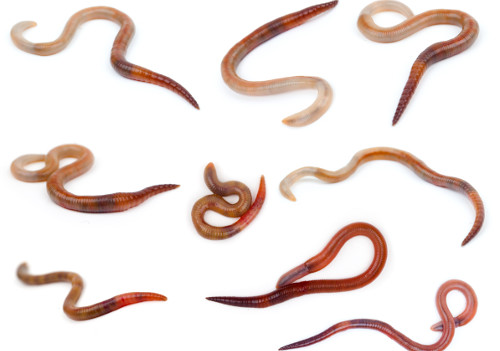Red Wiggler Worms Demystified: Unlocking the Secrets of Vermiculture for Greener Living and Nutrient-Rich Soil
In the realm of sustainable practices for enhancing dirt high quality and advertising eco-conscious living, red wiggler worms play an essential yet frequently ignored role. Red Wiggler Worms. Recognizing the complexities of caring for these worms, maximizing their environment, and utilizing their spreadings can lead to a greener way of life and healthier soil for plants to grow.
The Role of Red Wiggler Worms
Red Wiggler worms play a crucial role in composting systems by effectively breaking down natural matter right into nutrient-rich spreadings. These voracious eaters eat a range of organic materials, such as kitchen area scraps, backyard waste, and paper products. As they feed, the worms' digestion procedures break down the organic issue right into a fine, dark, and nutrient-dense product referred to as worm castings or vermicompost.
The castings produced by Red Wiggler worms are very valuable for soil health and wellness and plant development. They are abundant in necessary nutrients like phosphorus, potassium, and nitrogen, which are essential for sustaining healthy plant advancement. In addition, worm spreadings have advantageous germs and enzymes that aid boost dirt framework, rise water retention, and improve nutrient uptake by plants.
Benefits of Vermicomposting

In addition, vermicompost, the nutrient-rich end item of vermicomposting, serves as an outstanding natural fertilizer and dirt conditioner. It enhances soil framework, enhances dirt aeration, and raises soil moisture retention. These residential properties add to healthier plants with stronger origin systems and better resistance to illness and insects. Vermicompost additionally enriches the dirt with essential nutrients like nitrogen, potassium, and phosphorus, advertising plant growth and overall soil fertility.
Additionally, vermicomposting assistances lasting gardening practices by offering a all-natural and chemical-free alternative to synthetic plant foods. Red Wiggler Worms. This eco-friendly approach not only enriches the soil however also helps in reducing reliance on damaging chemicals, promoting a greener and extra sustainable means of gardening
Establishing a Worm Bin
When establishing a worm container for vermicomposting, correct configuration is crucial to ensure the success of the composting procedure. The very first action in setting up a worm container is picking an appropriate container.
After adding the bedding, introduce the red wiggler worms to the bin. It is advised to start with a handful of worms and progressively boost as they multiply. The worms must after that be given with food scraps such as vegetables and fruit peels, coffee premises, and eggshells. It is necessary to stay clear of adding meat, milk, oily, or salted foods to stop attracting parasites and producing undesirable odors.
Routinely monitor the moisture levels and temperature level in the worm bin to make sure ideal conditions for the worms. With correct arrangement and maintenance, the look what i found worm container will efficiently transform natural waste right into nutrient-rich compost for your plants and yard.
Collecting Worm Castings
To successfully accumulate nutrient-rich worm castings from your vermicomposting system, a systematic harvesting technique is important. When it comes time to collect the worm castings, there are a couple of vital actions to comply with to guarantee an effective process. First of all, stop including fresh food scraps away of the worm bin for a couple of weeks prior to collecting. This motivates the worms to move sideways with fresh bed linen and food, making it easier to scoop out the castings from the opposite side.

Troubleshooting Common Issues
Identifying and attending to typical difficulties that might develop throughout the vermicomposting process is vital for preserving a efficient and healthy worm bin. One common concern that vermicomposters encounter is overfeeding. Including excess food scraps can cause a build-up of dampness and level of acidity in the worm bin, potentially damaging top article the worms. To prevent this, feed the worms in moderation, ensuring that the food scraps are properly broken down prior to adding more. One more problem is unpleasant smells originating from the worm bin. Foul scents suggest anaerobic conditions, normally triggered by overwatering or insufficient ventilation. To treat this, change the moisture degrees by adding completely dry bed linens materials like shredded paper or cardboard and boost oygenation by transforming the bedding consistently.
Additionally, if the worm populace is decreasing or the worms appear harmful, maybe because of environmental stress factors such as extreme temperatures or pH degrees. Keeping track of these variables and making required modifications is essential for the health of the worms. By fixing these common issues promptly, vermicomposters can guarantee a effective and smooth vermicomposting procedure while preserving a prospering worm populace.

Final Thought
To conclude, red wiggler worms play a vital duty in vermiculture by damaging down raw material into nutrient-rich dirt. The advantages of vermiculture consist of greener living and enhanced soil high quality. Setting up a worm container is important for successful vermiculture, and harvesting worm spreadings gives beneficial garden compost for horticulture. By recognizing and troubleshooting usual concerns, individuals can unlock the secrets of vermiculture for lasting living and much healthier soil.
As they feed, the worms' digestive system procedures break down the natural issue into a fine, dark, and nutrient-dense product recognized as worm castings or vermicompost.
The spreadings created by Red Wiggler worms are extremely helpful for soil wellness and plant growth. Including excess food scraps can lead to a Read Full Report build-up of moisture and level of acidity in the worm bin, possibly hurting the worms.Additionally, if the worm population is decreasing or the worms appear harmful, it can be due to environmental stress factors such as extreme temperature levels or pH levels. Establishing up a worm bin is crucial for successful vermiculture, and harvesting worm castings gives useful compost for horticulture.